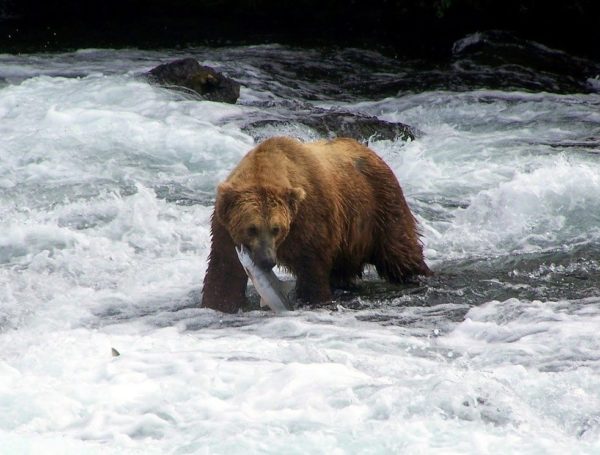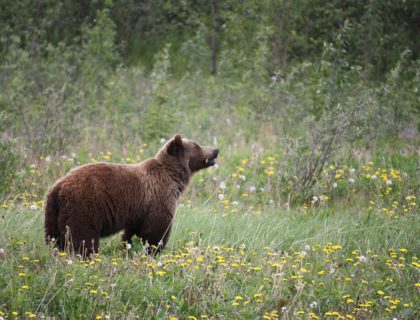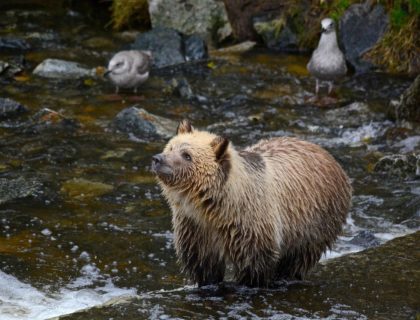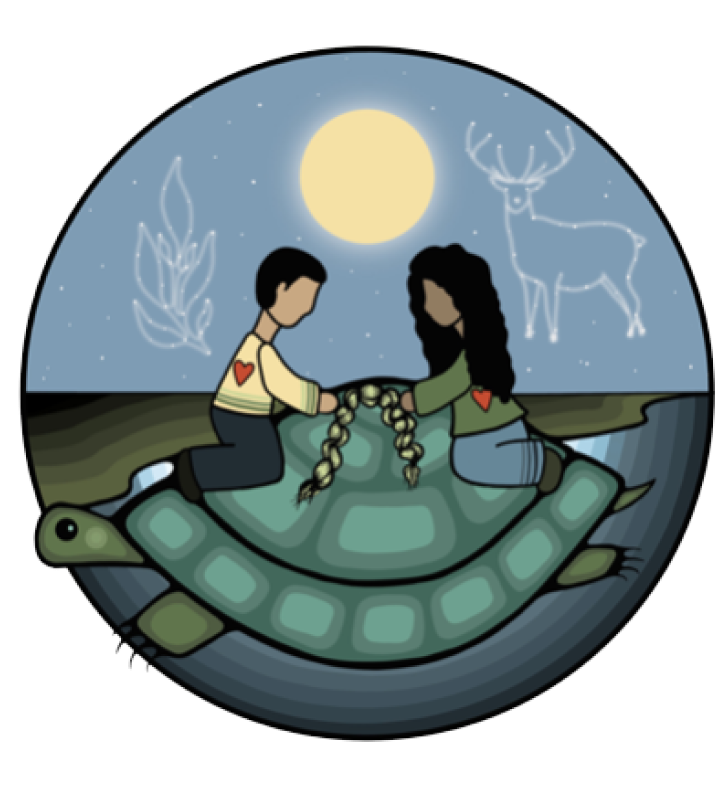Case Studies
Case Study 4: Grizzly Bear Monitoring according to Heiltsuk Law
Case Study 4: Grizzly Bear Monitoring according to Heiltsuk Law
For their entire lives, Heiltsuk First Nation in British Columbia have interacted with and relied upon salmon and their predators, the grizzly bear, interacting with them in what is known as bear-salmon-human systems. Currently, salmon are threatened by human activities which have caused their runs to decline by 50% in this area from their historical abundance. As grizzly bears depend on salmon which influence their diet and population dynamics, the decline in salmon may negatively affect grizzly bears, ultimately disrupting the bear-salmon-human systems. To address this issue, a research collaboration between Heilstuk First Nation and researchers was established to investigate the current grizzly bear populations and their relationship with salmon populations in the Koeye watershed. This research was designed to align with management, contemporary research, and Heiltsuk Nations customary law, Gvi’ilas, to ensure traditional values of Heiltsuk First Nation were upheld and at the forefront of the research.
In consultation with Heiltsuk community members, six main principles were derived from Gvi’ilas to frame the research questions and management issues. In doing so, researchers put forth the values that matter the most to the Heiltsuk community as they will be impacted by the decline of grizzly bears and any management decisions made in this regard.
To collect data on grizzly bears, hair samples were collected each year to obtain their DNA to identify the individual itself, their species and gender. This was done by setting up barbed wire snares that would capture the hair of any animal that may brush up against it. This is a great way to gain information on grizzly bear population changes as it is non-invasive and culturally appropriate, ensuring no harm to the bears. To assess the availability of salmon populations to the grizzly bears, salmon were counted by stream-walking along the Koeye River.

The DNA was analyzed and modeled using a series of programs that were able to establish the approximate number of grizzly bears that were detected in the Koeye watershed during sampling. Their results found that over the years, the number of bears recorded slightly fluctuated, however most bears detected were the same from previous years, with low captures of new bears. This suggests that the grizzly bears are not reproducing at high rates, and that the population is declining which could be the result of the declining salmon populations.
Overall, this study showcases the ability to weave Indigenous knowledge with western science to conduct research with communities concerns at the forefront and the direct involvement with study design. Through respect and reciprocity, Heiltsuk First Nation demonstrated how much they value natural systems and how this ultimately impacts elements of decision making. A major outcome of this project was that the researchers and Heiltsuk First Nation were able to establish guiding principles for resource management and create a framework for weaving scientific research with an Indigenous research agenda that is created with and for Indigenous people.
“Successful resource management by Indigenous people may require approaches like this one, in which collaborative science- based management is embedded within a socially and culturally appropriate framework for action. Such a strategy can foster unique, ancient intimacy with traditional lands and resources representing a rich element of our collective humanity. And, in the context of Indigenous resource management or co-management, which is now so often crippled by conflict, the approach presented here can also provide a powerful engine for conservation” – Housty et al. (2014)
Reference: Housty, W. G., Noson, A., Scoville, G. W., Boulanger, J., Jeo, R. M., Darimont, C. T. & Filardi, C. E. (2014). Grizzly bear monitoring by the Heiltsuk people as a crucible for First Nation conservation practice. Ecology and Society, 19(2). https://www.ecologyandsociety.org/vol19/iss2/art70/






